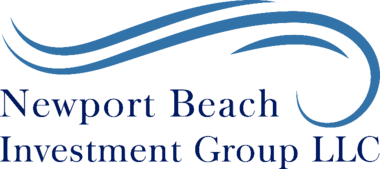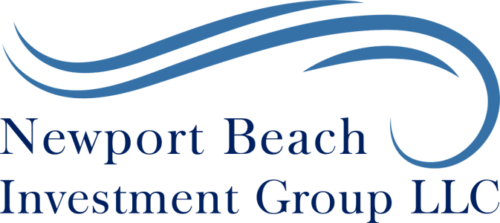Financing Options
A Term loan is a lump sum of capital that you pay back with regular repayments at a fixed interest rate—this type of traditional financing is what most people think of when it comes to small business loans.
The “term” in “term loan” comes from its set repayment term length, which can range from a few months to several years depending on the type of loan. Therefore, although term loans can vary in length, the phrase “business term loan” is most often used to refer to loans with terms of one to five years.
Generally, business owners use the proceeds of term loans to finance specific, one-off investments for their small businesses such as real estate purchases, business expansions, debt refinancing, and more.
A revolving line of credit allows you to draw cash as you need it, like a normal business line of credit. The key difference is that a revolving business line of credit allows you to access additional funding after paying the balance down.
In many ways, they work just like a personal credit card. A business owner is given a credit line, from which they can borrow up to a certain maximum. Another similarity is that you don’t have to use the total amount at once, as you would with a small business loan.
Instead, you have the freedom to borrow only the amount you need at a time. You can chip away at your credit line, or use it all at once—the choice is completely left up to the business owner.
You can then put the amount borrowed—or a portion of it—back into the credit line, where it gets added back into the total. The amount you replaced becomes available once again, which you can immediately draw from.
This cycle of drawing the funds you need, replacing them, and using them again is where this type of business line of credit gets the “revolving” name from.
With convertible debt, a business borrows money from a lender where both parties enter the agreement with the intent (from the outset) to repay all (or part) of the loan by converting it into a certain number of its common shares at some point in the future. The loan agreement specifies the repayment terms which include the timeframe and the price per share for the conversion as well as the interest rate that will be paid until conversion occurs.
The lender can choose to convert the loan to shares according to the “conversion privileges” set out in the agreement. Sometimes the agreement also includes a “callable option” that allows the borrower to force conversion when the value of its shares reaches a certain threshold for a certain period of time.
Lenders like convertible debt because the borrower pays them a fixed rate of interest until they trigger the conversion, at which point they will own shares.
Companies typically take on convertible debt when they believe their shares will increase in value. This allows them to reduce equity dilution (giving up too much ownership). For example, if a business wants to raise $1 million and its shares today are worth $20, it would have to sell 50,000 to reach its target. With convertible debt, it can defer until shares are worth $50 each and issue only 20,000.
If you are going to raise financing to build and grow your business, it’s worthwhile to consider using venture debt to complement the equity you raise. Venture debt is a type of loan offered by institutions and non-bank lenders that are designed specifically for early-stage, high-growth companies.
Typically a business can’t consider unpaid invoices as an asset. Lenders want to see money in the bank.
Lenders that provide accounts receivable financing look at outstanding invoiced goods and services, which are considered an asset. And although they haven’t been paid, there’s a payment schedule (due dates).
Accounts payable finance refers to lending that concentrates on the payment of supplier invoices. It enters into the working capital cycle at an earlier point in the supply chain than other finance products, providing funds as and when required to fund opportunities and pay suppliers and other creditors.
Accounts payable finance relies on the ability of the buyer business to repay the credit supplied and does not rely on supplier or customer capacity or credit status. Businesses can take as much cash as required up to their assigned credit limit in order to pay whatever supplier invoices they choose. at a predetermined time of their choosing. Credit is usually offered for up to 120 days and, once repaid, the revolving facility can be used, repaid and reused in line with the business’s cash needs.
What is a grant? A grant is a way the government funds your ideas and projects to provide public services and stimulate the economy. Grants support critical recovery initiatives, innovative research, and many other programs.
A grant is one of many different forms of federal financial assistance. Federal financial assistance is a broad term to refer to the various ways the U.S. government redistributes resources to eligible recipients.
Existing Financing
Managing business debt can be a challenge. But if you’re juggling multiple outstanding loans and payments, that challenge can quickly become a never-ending cash flow nightmare.
We usually begin our engagements by exploring financing, refinancing, or consolidation options. Most often we find that a business’s financing position can be improved, which increases the company’s attractiveness to equity investors. Subsequently, equity investments can retire outstanding debts, lowering our clients’ WACC.
Debt consolidation rolls multiple debts, typically high-interest debt, into a single payment. Debt consolidation might be a good idea for you if you can get a lower interest rate. That will help you reduce your total debt and reorganize it so you can pay it off faster.
If you’re dealing with a manageable amount of debt and just want to reorganize multiple bills with different interest rates, payments and due dates, debt consolidation can improve your situation.
Debt refinancing is the replacement of existing debt with new debt that contains more favorable conditions. A
refinanced loan typically lowers the interest paid over the life of the loan as well as potentially restructures the payment
schedule.
-
You have multiple loan products outstanding
-
You currently have high-interest loans and want a lower-interest option
-
You currently have short-term loan products and want to extend your payments
-
Consolidation makes financial sense for your business

